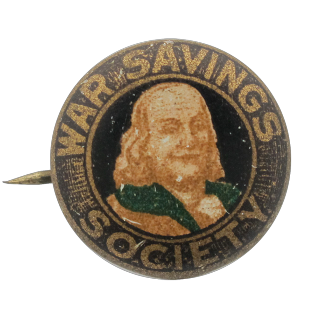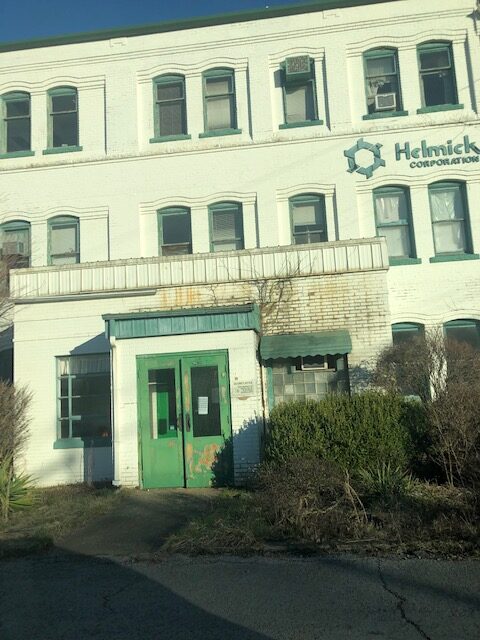
This story starts in Lewis County, WV. Nathaniel Davis Helmick was born in 1837 and learned the trades of wagonmaking and being a blacksmith. At the age of 27, Nathaniel joined the 17th regiment of the West Virginia Infantry, fought on the Union side until the war’s end, and left with the rank of Captain. For the years to come, he would be known as Captain Helmick to friends and in business.
In 1865 Captain Helmick was one of six founding members of the Grand Lodge of Masons in Fairmont.
After the war, he returned to Marion County, WV, and did blacksmithing work for a while and then, in 1882, founded the Marion Machine Works in Palatine. This was the small community on the East Side of Fairmont, across the Monongahela.
The coming of railroads at this time was exciting. For West Virginia, and especially Fairmont, it would be necessary to help expand and grow.
Captain Helmick was honored to be in attendance at Wheeling, WV, with heads of the Baltimore and Ohio Railroad Company. They were trying to decide how to get the best route through Harrison, Marion, and Monongahalia counties. A track that would benefit both businesses and patrons.
The details were approved for the coming of the railroad, and Marion Machine Works would handle the turning of the metal for the rails. Captain Helmick was the superintendent of the company at this time. Marion Machine Works was the first manufacturing business in Marion County.
The MMW, at this time, was busy building bridges. Bridges for towns and for the railroads. It seems Capt. Helmick was a genius when it came to designing them. He designed, supervised, and his company painted and maintained them. He did bridges in Marion and Mon Counties.
The company was so versatile it made some of the jail cages used in the city, as well as wagons, plows, school desks, [I remember the metal ornate stands for the wooden desks that were screwed into the floors when I went to school] stoves, and grates. Marion Machine Works was the place to go if it was made of metal.
The business was located on the east side of the suspension bridge connecting Palatine to Fairmont.

The company itself had a few bumps along the way, and not everything was easygoing. They had a couple of burglaries, one in 1881, where they used a “Jimmy” to open one of the windows, stealing razors, penknives, and other small items, plus about five dollars from the cashbox, totaling about twenty dollars in all. The next burglary was in 1899. The robbers used dynamite to demolish the safe and furniture in the room completely. They absconded with little money, and on the floor were later found checks and valuable papers.
The last straw for this business was when a fire caused around fifteen thousand dollars in damage, and the insurance was not enough to cover the loss.
Marion Machine was done.
Jacob C. Beeson was a very respected man in Fairmont who had his own hardware business and held multiple city government positions. Mr. Beeson and Capt. Helmick got together to form Beeson and Helmick’s Fairmont Machine Company. They would erect two large new buildings near the B&O railroad depot, making receiving and shipping goods faster and easier.
During this time, they would get new orders for bridges to be erected over Deckers Creek in Morgantown and another over Dunkards Creek. Helmick’s knowledge of bridge building would be put to use again.
Fire once again would take Beeson and Helmick’s business away. Believing to have started in the blacksmiths’ department, a fire demolished all buildings and costly new equipment just installed. The devastation would tally around fifteen thousand dollars. They had insurance at the time but had not upped the coverage to include the new machinery. They were covered only for six thousand dollars.
1901 would see the Helmicks back in business as themselves as Helmick’s Foundry and Machine Co. Fredrick Helmick, the captain’s son, would be in on this business. Fredrick was assistant captain of the Fairmont Motor Club and even ran for city councilman.
Helmick Foundry and Machine Co. produced mine cars, tipple equipment, frogs, and switches. When the company was in full operating mode, they were melting around ten-thousand pounds of iron a day. This went into producing mining cars and mining machines. Without this company, the mines would not produce, trains wouldn’t run, and homes would freeze. This was a very needed business at the time.
They would turn out about ten to fifteen cars a day. During the first world war, shipments were slow, and supplies were hard to find. The mine cars could only go out once a month, whereas they were usually shipped about three times a month.
During the war, Helmick’s employees supported the effort by buying about five-thousand dollars in Liberty Bonds.

Helmick hired Union and non-union workers. Harry Wright, State Industrial Organizer, got one-hundred Foundry employees to organize a War Savings Society. It had three intended purposes. The first was to remind Americans of their responsibility to the nation, the second was to encourage frugality, and the third was to permit the government to large sums of money. If you joined, you were obligated to be frugal, save, and recruit new members. https://ia600301.us.archive.org/27/items/unitedstatesgove00inunit/unite…
After the war, the company needed to ramp up production, and they were behind on orders. They built another new building and had Monongahlia Traction Company come in and prepare them for electrification. They wanted all their machines to run on electricity. They felt it would run smoother, produce faster, and need fewer workers. They could catch up on orders they were still behind on, even if they had to work day and night. Even with the advancement they had made in the business, they still tried to hire returning servicemen.
In 1920 the workers went on strike for safer working conditions and better pay. The occupation was not without its risk. Men would lose hands by wearing gloves and catching them on cogs. They were told not to wear gloves. They would be working on machines, and wood would fly from sanding into a worker’s face and break a jaw. Workers would lose fingers and get many large cuts. It came with the type of job. I could not find the outcome of the strike, but all must have been resolved because the Foundry would continue to operate until 1937 when it was turned into First NiHard Castings. In 1969 Helmick Corporation was formed, and that is what it is today,
They are a company that makes metal roofs and still works with mines on pumps and other items that need to be repaired or replaced.
In this day and age, to have a company be around for over a hundred years is unusual, but to have a company be around for over a hundred years and still run by a member of the original founding family is almost unheard of.
Fairmont is proud to be the home of this family and company. May they last for another hundred years.

I will publish a new blog each week in Fairmont and Marion County WV history each week. If there is a topic you would like to explore more, please comment below, and I will research and see what I can find.
Please leave me a comment below to let me know if you liked or did not like the article this week. Your comments help me to improve and better serve you.
Thank you for reading my blog, and remember: History is the spine of America; not learning from it would make us collapse and fall

Love this historic info., and photos. If you have more please share. Raised in Monongah, my family has been here many generations and I really enjoy all this you’ve shared. Of course these folks were the spines and the strong backs today was built on
Hi Sharon, Thank you for your response. I really enjoy sharing the history of our local area. My husband is from Monongah, also. Each week I publish a new blog article about Fairmont and Marion County. Please let me know if there is a story you would like me to do an article on. Thanks again for your comment, and I hope to hear from you again!